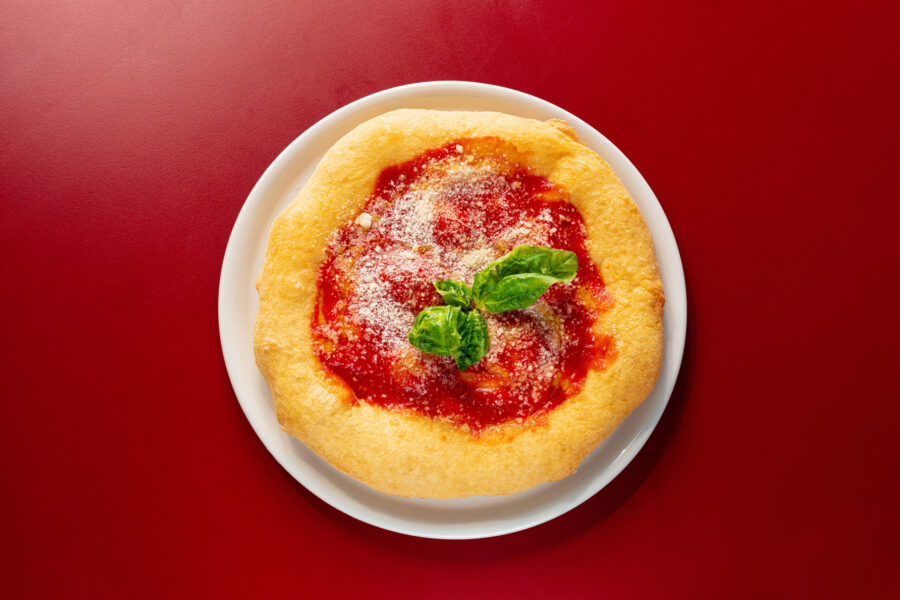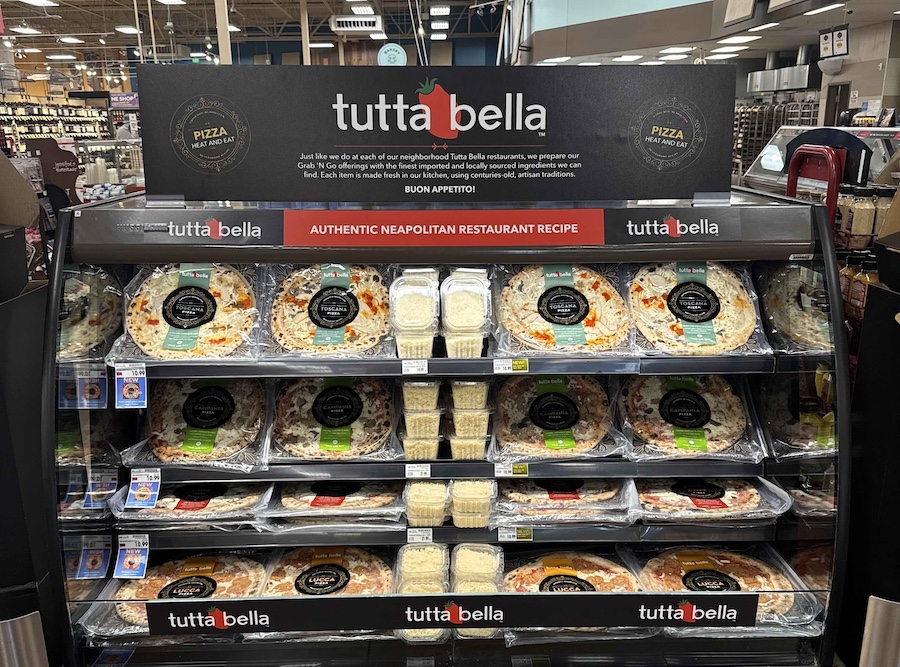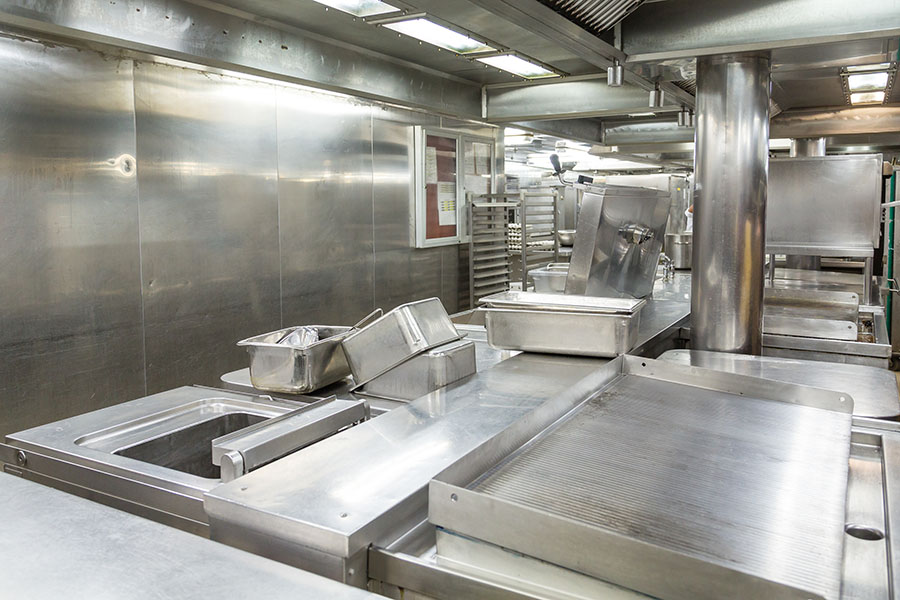
Make an out-of-this-world sauce experience for your menu
‘The cook of any house of note always seats himself in a high arm chair to give his orders; he holds a long wooden spoon in his hand, with which he tastes the various sauces that are cooking on the stoves and which serves him also as a weapon with which to chastise the idle and
gluttonous.’
– Olivier de la Marche, Maitre d’ Hotel, Duchy of Burgandy 1562
In the 452 years since those spoon-cracking head cooks of medieval Europe reigned supreme, the making of sauces has changed as much as the sauces themselves. These days in any given pizzeria or restaurant, you may find almost all the sauces squeezed out of plastic bags, tubs and cans. This is to concede to the demands of the modern fast-casual customer whose priorities are “consistency, convenience and price.” As all of you small business people know, sauce-making in house is one undertaking that has been directly affected by the price of rising pay, taxes, insurance, workers’ compensation and waste which in turn makes the pre-prepared sauces an attractive alternative. The downside is losing the pride of craftsmanship that distinguishes independent pizzerias and restaurants from the corporate “conglomerizzas.”
In the 15 years I’ve owned and operated a high-volume pizzeria, I’ve seen the pre-made sauce choices explode into variations of savory, sweet, tangy and sour flavors and have learned to manipulate these sauces to my benefit.
There are several ways to integrate pre-prepared sauces into a restaurant and pizzeria:
- Pair with cheeses to transform taste from creamy to zingy.
- Use the sauces as a marinade for meatballs or as a braising liquid like braised beef.
- Toss strong sauces with vegetables to create even deeper, more complex variations.
- Toss with powders and a combination of other sauces for radical heat experience.
Here’s a rundown on some types of sauces and how I’ve learned to manipulate them.
- Cream sauces. Probably the biggest “wow” in any pasta or pizza is the cream sauce. Perfect integration with soft cheeses, meats, herbs, pestos, glazes and roasted vegetables like cauliflower, potato and roasted garlic. Béchamel (Alfredo) is sold for 13 to 20 cents per ounce. It can be used to bolster dried-out risotto, (yes, a sacrilege) or to expand your menu extensively. Beurre blanc (lemon, cream and butter) sauces can now be obtained for 52 cents an ounce and is definitely cheating, but it can transform fresh herbs, bacon, cheeses and/or more cream into a killer pizza or pasta dish.
- Stock-based sauces. These can be very intense but time consuming to make from scratch. Demi-glace type sauces are refrigerated and run 30 to 40 cents an ounce.
- Tomato sauces. This is the area of most diversity. There are great tomato sauces out there and there are also some very bad ones. The best are from the companies that pack their tomatoes only hours after being picked which produces a sauce that is better than any other. Never listen to your distributor alone about tomato sauce. Taste test your staff on the sauce for the best response.
- Pestos and salsas. Premade basil pesto is a phenomenal accompaniment to pastas and pizza. Salsa is so easy to make in a pizzeria. I make it in-house with everything on the makeline and a touch of cumin and cayenne powder.
- Chutneys. Pairing fruit sauces with fresh fruit, mustards, garlic, hot peppers and even onion makes for a fantastic finishing sauce for pizzas, sandwiches and pasta.
- Egg/ mayonnaise sauces. Aioli was big in the ’90s but this mayo sauce is fantastic with almost every source of onion, garlic, pesto or spicy sauce.
- Vinaigrettes. Using extra virgin olive oil and vinegar is so easy and cheap when you have an immersion blender that countless vinaigrette are possible. Tossing greens in a mild vinaigrette before topping on a finished pie or pasta transforms it with finesse. I love tossing rehydrated dried cherries and/or blueberries in balsamic vinegar for a glaze without reducing!
- Oils: These were big in the ’80s in the fine-dining restaurants I worked in and can be held for as long as four weeks. An easy bell pepper sauté with good olive oil can make a melting mozzarella glisten with sweet-popping taste. Fresh basil, mint, rosemary and thyme infused in oil can be a great accompaniment for bread instead of butter.
 Giovanni’s Aurora Sauce
Giovanni’s Aurora Sauce
My friend, Chef Giovanni di Negris, who owns Trattoria Trullo in Chicago, turned me on to this classic combination of tomato and cream years ago.
1 No. 10 can of pre-prepared sauce
1 2.5 pound bag of pre-prepared Alfredo, (Béchamel) sauce
Stir both together using an immersion blender.
This very simple, pre-prepared “stir and serve” sauce costs seven to 10 cents an ounce and can be a base for other sauces. You can add hot pepper flakes for a Diablo sauce or chopped basil for a savory soup. You can go all out with chopped roasted garlic and braised beef for creamy bolognese-style pasta sauce or olives, capers and sweet soppressata for a creamy Cacciatore.
Concia di Zucca
Four years ago, I visited the cliffs of Positano, Italy, where a great cook named Gilda made a simple, fresh sauce for her homemade pasta. She called it her version of “Concia di Zucca,” which (to my dismay) included canned tomatoes with the traditional zucchini, garlic, vinegar, olive oil and chopped mint. Instead of cooking the zucchini with heat she cooked it with salt then rinsed to release any bitter taste.
3 medium, fresh zucchini
2 tablespoons salt
1 can whole peeled tomatoes, drained
1 tablespoon garlic, chopped fine
1 tablespoon red wine vinegar
2 tablespoons extra-virgin olive oil
1 cup fresh mint leaves, roughly chopped (or chopped fresh basil)
Cut the zucchini lengthwise then into small dice and place into a colander with two tablespoons of salt and toss for one minute. While waiting, cut the tomatoes lengthwise then in small dice and place in another colander to drain completely.
Place the garlic, vinegar, olive oil and mint in a large bowl and mix with a spoon.
After 15 minutes, rinse the zucchini, drain and place in the bowl with the tomatoes and all other ingredients and toss. Let this sit for at least 30 minutes before tossing with hot pasta.
This recipe is also fabulous with chunks of fresh mozzarella or feta cheese.
Quick Pizzeria Barbeque Sauce
This is a nice, Cincinnati-style tomato-based barbeque sauce that uses everything you can find in your place, (except the Worcestershire and possibly honey)
½ cup Worcestershire sauce
1/3 cup extra virgin olive oil
1/3 cup raw peeled garlic cloves
2 cups raw sliced onion
1/3 cup jarred jalapeños
1/3 cup vinegar
½ cup pineapple tidbits
1/3 cup honey
2½ cups of your proprietary pizza sauce
Place the Worcestershire, oil, garlic, onion, jalepeño and vinegar in a bowl and toss to integrate. Pour into a pan and place in a 475 F pizza oven until the onion and garlic caramelize, tossing frequently to make sure parts are dark brown and some are blackened. This will take about 12 to 15 minutes. If some stick to the pan, add three tablespoons of water and scrape flavor from the pan. Remove and let cool.
Place the pineapple, pizza sauce and honey in a container. Add the onion mix and blend until smooth. Add more sweet honey to taste. (Either molasses, liquid smoke and/or sorghum syrup would make this sauce more brown and deep if they are available to you.)
 White Truffle Mushroom Crema
White Truffle Mushroom Crema
This is made with pre-prepared Alfredo and mushroom base. It’s perfect for a finishing sauce on pizza, pasta or with sandwiches and will blow your customers away!! (For a “giant” mushroom flavor, add some re-hydrated, dried porcini mushrooms also.)
2 large Portobello mushroom caps
1 tablespoon finely chopped garlic
1 heaping teaspoon mushroom base
3 tablespoons extra virgin olive oil
2 cups whole milk ricotta
4 ounces of pre-prepared Béchamel (Alfredo) sauce
1½ tablespoons white truffle oil. (You may use two if you want it stronger.)
Place the Portobello mushrooms on a tray and coat the caps with the oil. Sprinkle the garlic and mushroom base on the caps and place in a deck or converyor oven at 475 F for 7 to 9 minutes. The mushrooms should be hot, limp and the garlic cooked. Set aside to cool.
Place the ricotta, bechemel and truffle oil in a container or blender. When the Portobellos are cool, place in the container with all the oil and garlic in the pan and blend to a creamy consistency. Taste and add seasoning if needed.
Place in a refrigerator overnight or serve immediately.
John Gutekanst owns Avalanche Pizza in Athens, Ohio and has a pizza blog called Pizza Goon. He is an award-winning pizzaiolo, baker, teacher, speaker and author and has been featured in Gastronomica, Food Arts, National Geographic, Alimentum Food Journal, Food Network and Best Food Writing, 2012.








